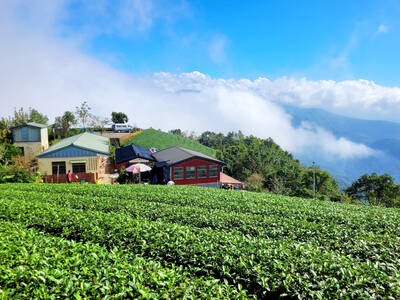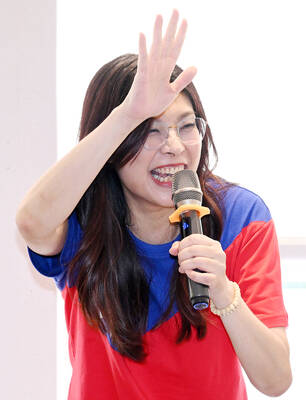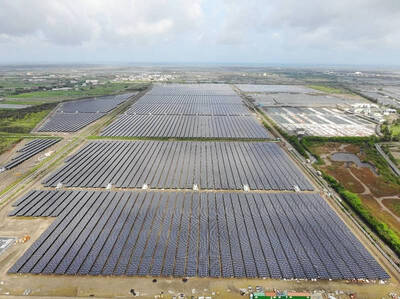EVER felt your fitness regime was heading into reverse gear? Yes, we've all been there -- but now comes a new workout phenomenon whose purpose is precisely that. Retro walking is big, and growing: what it involves is running (or walking) backwards, and increasing numbers of enthusiasts say it is giving their exercise program a whole new perspective. Indeed, so popular is this bizarre activity that events such as the New York Road Runners Backwards Mile are now being staged. This year's was held in Hudson River Park and was run, appropriately, on April 1. Meanwhile, backwards fun runs around Europe are attracting huge numbers of entrants.
Such is the growth of this sport that records are being set and broken at a far faster rate than those of forward-moving counterparts. Last year, Arthur Magni reached the finishing line of the New York event first, breaking the tape with his back in a time of six minutes 28 seconds while Timothy Badyna, known as Backwards Bud, back-pedalled his way through a full 41.9km marathon in under four hours. Why, you may ask? Proponents claim the technique is kinder to knee and hip joints, with less of the pounding associated with regular jogging and, inspiringly, burns a fifth more calories.
"Your balance increases. Your hearing increases. Your peripheral vision increases," Badyna says. One wonders whether neck strain from twisting to see where you are going is common, but Badyna insists that while being blindsided is a downside, as long as you run somewhere safe, you can cut down the chances of unforeseen obstacles in your way.
Remarkably, scientists are beginning to discover there is some truth in the claims of retro runners. A study conducted at South Africa's Stellenbosch University, published in the International Journal of Sports Medicine last year, found that backward training improved cardiorespiratory fitness while helping to streamline the physique of a group of novice runners. Researchers in the university's department of medical physiology looked at the effects of a six-week, thrice-weekly backward running program on female students compared with a group who stuck to their regular activity schedule. At the end of the study, the retro-runners were found to have significant decreases in oxygen consumption, meaning they had become aerobically fitter, and had lost an average 2.5 percent of their body fat. "Our results provide evidence that backward locomotion can improve cardiorespiratory fitness and possibly lead to positive body composition changes in young women," was the researchers' verdict.
Retro-running dates back to the 1970s, when a small group of physio-therapists began recommending it to injured athletes and footballers. There is less movement of the hips running this way which means impact on the joints decreases, making it an ideal substitute for rehabilitation from knee and back problems. "It's a reasonable way to incorporate another means of exercise to lessen the stress on any given part of the body," says Professor Barry Bates, a biomechanics researcher at the University of Oregon who has carried out extensive studies on the activity. His findings indicate that retro runners need move at only 80 percent of the speed of forward runners to gain the same physiological and fitness benefits.
Getting started requires some forward thinking. Aside from the fact that you are going to attract some bemused glances should you step backwards out of your front door and proceed to retro-run down the local high street, there is the significant drawback of a lack of hindsight. Professor Jon Wang, an orthopaedic surgeon at the University of Arizona and an adviser to Runner's World magazine, recommends newcomers to start somewhere safe such as a track or familiar road where you will avoid potholes, road signs and other hazards. He says backwards running works well as part of a cool-down at the end of a gym session. "Easing into a gentle backwards run lets you gradually decrease your heart rate, and it stretches your calf, quadricep and hamstring muscles, which have all been working hard during forward running," Wang says.
He confirms Badyna's hunch that it will also "improve your balance and coordination" and suggests progressing to running backwards towards the end of a regular jog. "Go slowly, taking small steps at first, and stay in control," he says. "Let the ball of the foot contact first, then allow the heel to touch just briefly. If this feels OK, repeat the one-minute segments two or three times, jogging forwards slowly in-between." After a few weeks he promises you will feel less anxious about collisions and can begin to step up your retro running to five or six minutes in total. "At this point, you can try taking longer steps and, if you want to stretch your legs more, try running backwards on a slightly downhill slope," he says.
Even sceptical experts concede that, while backwards shouldn't fully replace forwards, it can have a place in a workout program.
For some sports, it is an essential element of training. Champion boxer Gene Tunney ran 6km to 12km a day backwards and Muhammad Ali incorporated it into his regime. "Professional footballers, rugby players and referees as well as top track and field athletes all use it routinely," says Nick Linthorne, a biomechanics researcher at Brunel University in London. "It does make sense for other people, especially the injured, to include a little backwards running or walking as the landing is smoother." But the real attraction for the masses, he says, is the novelty factor. Like striptease workouts and karaoke spinning, retro running will appeal to those prone to gym boredom. "If the prospect of running backwards inspires someone who wouldn't otherwise exercise to get out, then that can only be a good thing."
On the Web: www.backward-running-backward.com

In recent weeks the Trump Administration has been demanding that Taiwan transfer half of its chip manufacturing to the US. In an interview with NewsNation, US Secretary of Commerce Howard Lutnick said that the US would need 50 percent of domestic chip production to protect Taiwan. He stated, discussing Taiwan’s chip production: “My argument to them was, well, if you have 95 percent, how am I gonna get it to protect you? You’re going to put it on a plane? You’re going to put it on a boat?” The stench of the Trump Administration’s mafia-style notions of “protection” was strong

Every now and then, it’s nice to just point somewhere on a map and head out with no plan. In Taiwan, where convenience reigns, food options are plentiful and people are generally friendly and helpful, this type of trip is that much easier to pull off. One day last November, a spur-of-the-moment day hike in the hills of Chiayi County turned into a surprisingly memorable experience that impressed on me once again how fortunate we all are to call this island home. The scenery I walked through that day — a mix of forest and farms reaching up into the clouds

With one week left until election day, the drama is high in the race for the Chinese Nationalist Party (KMT) chair. The race is still potentially wide open between the three frontrunners. The most accurate poll is done by Apollo Survey & Research Co (艾普羅民調公司), which was conducted a week and a half ago with two-thirds of the respondents party members, who are the only ones eligible to vote. For details on the candidates, check the Oct. 4 edition of this column, “A look at the KMT chair candidates” on page 12. The popular frontrunner was 56-year-old Cheng Li-wun (鄭麗文)

“How China Threatens to Force Taiwan Into a Total Blackout” screamed a Wall Street Journal (WSJ) headline last week, yet another of the endless clickbait examples of the energy threat via blockade that doesn’t exist. Since the headline is recycled, I will recycle the rebuttal: once industrial power demand collapses (there’s a blockade so trade is gone, remember?) “a handful of shops and factories could run for months on coal and renewables, as Ko Yun-ling (柯昀伶) and Chao Chia-wei (趙家緯) pointed out in a piece at Taiwan Insight earlier this year.” Sadly, the existence of these facts will not stop the